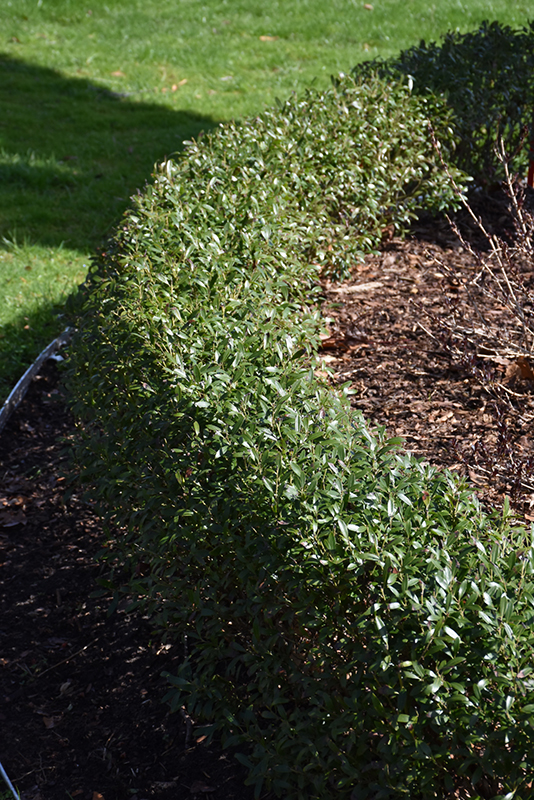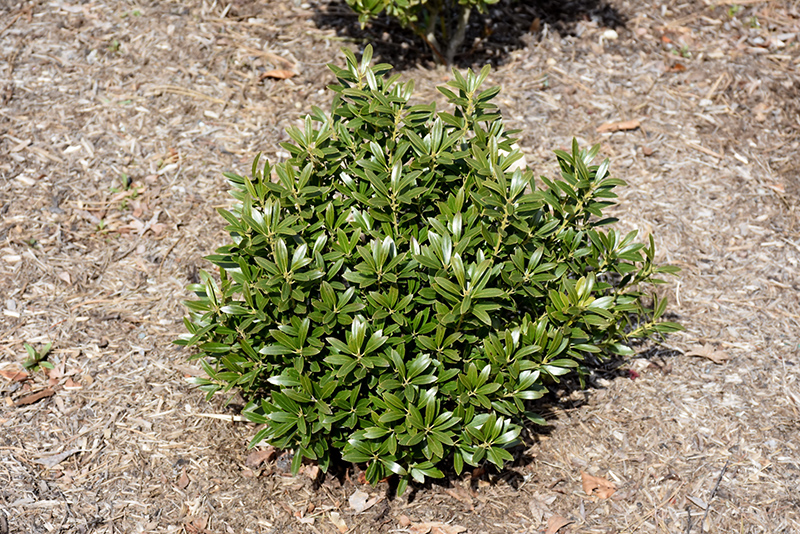Japanese Holly, Gem Box Ilex glabra 'SMNIGAB17' Height: 3 feet Spread: 3 feet
Sunlight:
Hardiness Zone: 5a Other Names: Inkberry Holly Brand: Proven Winners Description: This excellent variety looks more like a boxwood than an inkberry; a dense, bushy, ball shaped plant with small dark green leaves that emerge red-tipped in spring; great as a small evergreen hedge or container specimen in milder climates Ornamental Features Japanese Holly, Gem Box has dark green evergreen foliage on a plant with a round habit of growth. The small glossy narrow leaves remain dark green throughout the winter. It produces black berries from mid fall to late winter. Landscape Attributes Japanese Holly, Gem Box is a multi-stemmed evergreen shrub with a more or less rounded form. Its average texture blends into the landscape, but can be balanced by one or two finer or coarser trees or shrubs for an effective composition. This shrub will require occasional maintenance and upkeep, and is best pruned in late winter once the threat of extreme cold has passed. It is a good choice for attracting birds to your yard. Gardeners should be aware of the following characteristic(s) that may warrant special consideration; Japanese Holly, Gem Box is recommended for the following landscape applications; Planting & Growing Japanese Holly, Gem Box will grow to be about 3 feet tall at maturity, with a spread of 3 feet. It tends to be a little leggy, with a typical clearance of 1 foot from the ground. It grows at a slow rate, and under ideal conditions can be expected to live for 40 years or more. This is a dioecious species, meaning that individual plants are either male or female. Only the females will produce fruit, and a male variety of the same species is required nearby as a pollinator. This shrub does best in full sun to partial shade. It prefers to grow in moist to wet soil, and will even tolerate some standing water. This plant should be periodically fertilized throughout the active growing season with a specially-formulated acidic fertilizer. It is very fussy about its soil conditions and must have rich, acidic soils to ensure success, and is subject to chlorosis (yellowing) of the foliage in alkaline soils. It is highly tolerant of urban pollution and will even thrive in inner city environments. Consider applying a thick mulch around the root zone in winter to protect it in exposed locations or colder microclimates. This is a selection of a native North American species. Special Attributes In Eastern Washington & Oregon Japanese Holly can have dieback from our winters, We recommend mulching with about 3 inches of bark mulch at the base of the plant going out about as wide as the crown to protect the roots. Evergreens need to be watered during the winter. Our desert climate especially in late winter to early spring evergreens can suffer during next growing season. An easy way to remember check for dryness on the holidays Halloween, Thanksgiving, New Year's Day, Valentines Day & Easter.![]()
![]()
![]()
![]()
![]()
![]()
![]()
![]()
![]()
![]()
![]()
![]()
![]()
![]()
![]()


